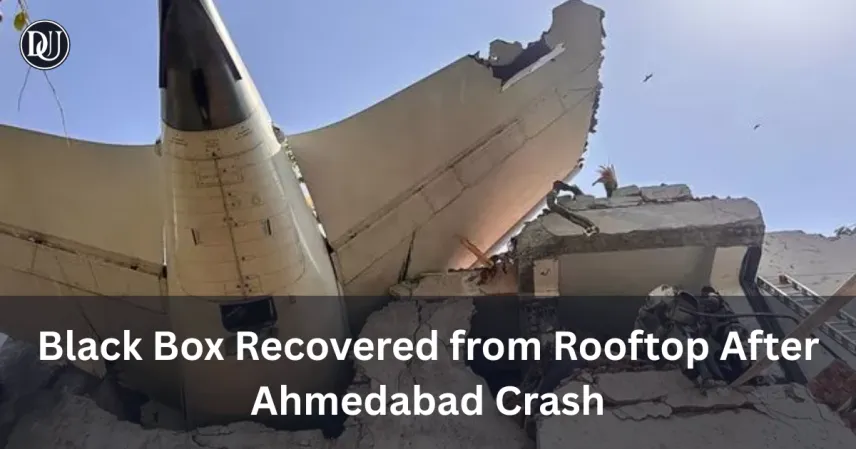🔥 This One Caught Me Off Guard
You ever hear news that just makes you do a double-take? Like, pause whatever you’re doing and just go, “Wait, *what*?” That’s exactly how I felt when I heard about the latest update on the Ahmedabad air crash. Remember that AI flight, an Air India plane, that had that super alarming incident? Well, the black box – yeah, the black box – was found. And guess where? On a freaking rooftop!
I mean, seriously, a rooftop? Not a field, not a ditch, but an actual building’s roof. Specifically, sources mentioned it was found on the roof of a hostel. That’s just…wild, right? It makes you picture the whole scene, kinda like a movie, but it’s all too real. This incident is just another reminder of how intense and unpredictable aviation incidents can be, and why every tiny detail matters in a forensic analysis.
![]()
🧠 What's Really Going On
So, for those who might not know, a “black box” isn’t actually black. It’s usually bright orange, to make it easier to find in wreckage, which clearly came in handy here! These flight recorders are basically the key to unlocking what went wrong. They’re super crucial for any aviation investigation, especially when we're talking about an aircraft accident. Think of it like a detective finding the absolute smoking gun in a mystery. This little orange (or, technically, black) box holds all the answers.
Specifically, it contains two main components:
- Cockpit Voice Recorder (CVR): This records all conversations in the cockpit – pilot chat, radio transmissions, even ambient sounds. It’s like listening in on those final moments, giving investigators a sense of the crew’s decisions and the environmental factors.
- Flight Data Recorder (FDR): This is where the hard data lives. It logs hundreds of parameters, from altitude and airspeed to engine performance and control surface positions. It’s a literal playback of the aircraft’s movements and health.
The fact that this particular black box was found on a hostel rooftop in Ahmedabad, after the Air India flight incident, just shows the sheer force involved. It’s a testament to how robust these devices are designed to be, surviving impacts that would shatter most other things. Recovering it intact is a massive step forward in understanding the sequence of events leading up to the crash. It means investigators won’t have to piece together guesswork; they’ll have concrete flight data.
Read Also: Traffic Saved Her Life: A Student's Air India Miracle
💡 What This Means for Us
Look, when something like this happens, especially involving an Air India flight, it naturally makes you think about air travel safety. But honestly, the recovery of this flight recorder is a huge win for transparency and safety. It means we’re one step closer to understanding exactly why this Ahmedabad air crash occurred. This isn't just about finding blame; it's about learning and preventing future incidents.
Every piece of information extracted from that black box will contribute to improving aircraft design, pilot training, and air traffic control procedures. It’s about building a safer future for everyone who steps onto an airplane. It takes time, of course, for the Directorate General of Civil Aviation (DGCA) or other relevant authorities to thoroughly analyze the data, but having the black box in hand is the biggest hurdle cleared. It gives everyone a bit more peace of mind, knowing that the answers, hopefully, are within reach.
![]()
📝 Your Final Take
It’s kinda wild, isn’t it? The sheer improbability of finding such a critical piece of evidence on a rooftop. But it highlights the dedication of search teams and the importance of aviation safety regulations. This discovery moves the Ahmedabad air crash investigation forward significantly. It’s a critical moment for understanding complex aerospace dynamics and reinforcing our commitment to safer skies. This whole situation is a powerful reminder that every single piece of data helps ensure that flying remains one of the safest forms of transportation. I gotta admit, it just solidifies my respect for the intense work that goes into making air travel as secure as possible, even when things go sideways.










